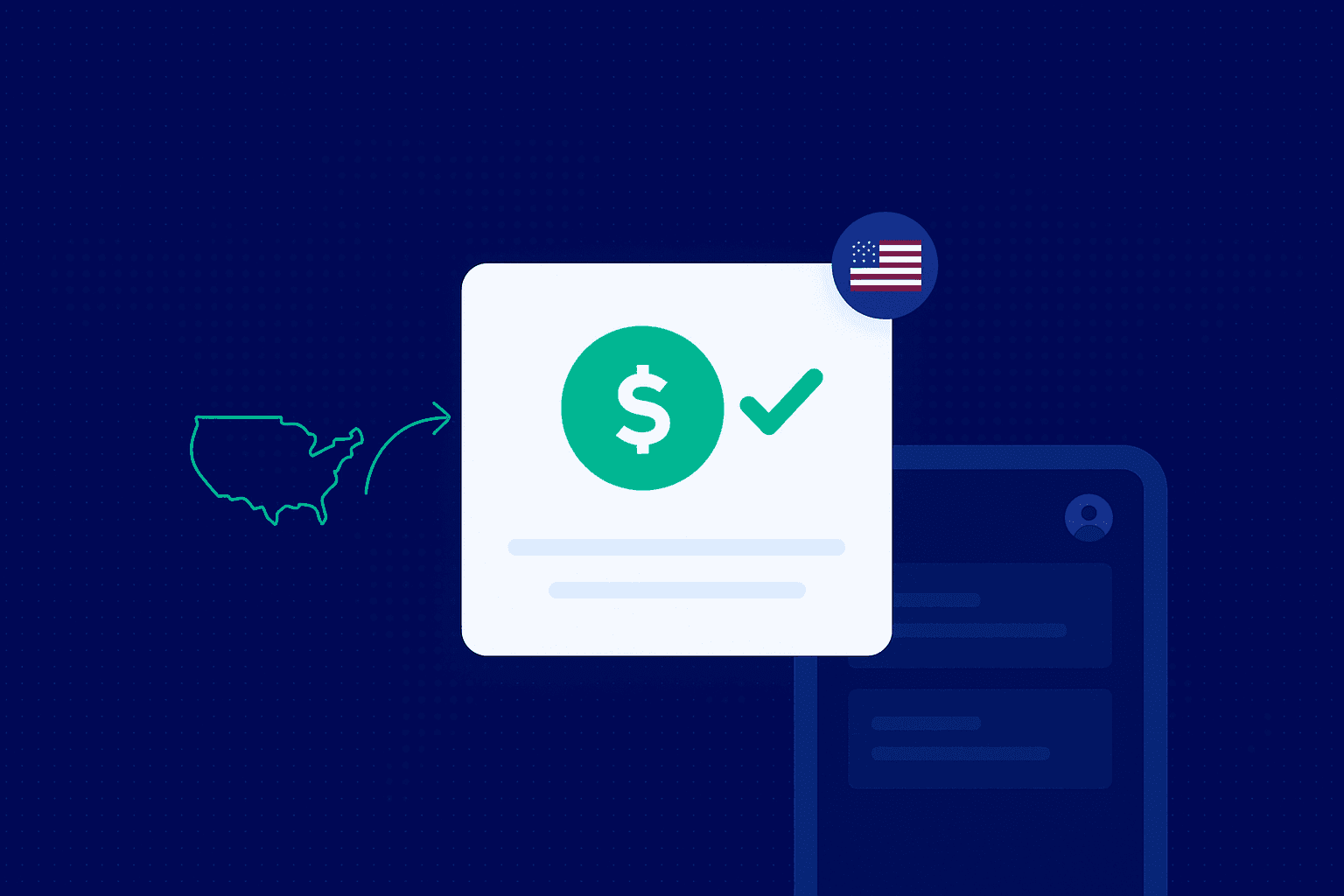Form W8BEN & W8BEN-E India: Complete 2025 Guide for Freelancers & Businesses

Last Updated: October 2025 (with latest form info and tips)
Key Takeaways:
- What are W-8 Forms? Form W-8BEN (for individuals) and W-8BEN-E (for entities) are IRS forms that certify you are not a U.S. taxpayer and claim treaty benefits. Indian freelancers and companies use these to avoid unnecessary U.S. tax.
- Why fill them? Without a W-8 form, U.S. law requires a flat 30% withholding on payments to foreign payees. By submitting the appropriate form, you can often reduce this tax to 0% under the India-U.S. tax treaty. This means you keep more of your earnings.
- W-8BEN vs. W-8BEN-E: W-8BEN is for individuals (e.g. freelancers, sole proprietors) while W-8BEN-E is for business entities (e.g. private limited companies, LLPs). Essentially, use W-8BEN if you’re getting paid in your own name, or W-8BEN-E if payments go to your company.
- Validity: Once you submit a W-8BEN or W-8BEN-E, it remains valid for 3 calendar years from the date of signing (unless your circumstances change). For example, a form signed in Oct 2025 is valid through Dec 31, 2028. Always update with a new form if your address, tax residency, or business status changes.
- Where to submit: Do not send W-8 forms to the IRS. Give them to the withholding agent that requested it – usually your U.S. client, employer, or the online platform that pays you (Upwork, Fiverr, PayPal, brokerage, etc.) Submit before your first payment to avoid any default withholding.
What is Form W-8BEN and Who Needs It? (For Indian Freelancers)
If you're an Indian freelancer, service provider or contractor working with U.S.-based clients. Form W-8BEN is your lifeline to getting paid without losing 30% to U.S. taxes. Form W-8BEN’s official title is “Certificate of Foreign Status of Beneficial Owner for United States Tax Withholding and Reporting (Individuals).” In simple terms, it’s a one-page form where you declare:
- You are not a U.S. person (you’re an Indian resident individual).
- You are the beneficial owner of the income (the money isn’t going to someone else).
- You are eligible for treaty benefits as an Indian resident under the India-U.S. tax treaty.
By making these certifications, W-8BEN lets you invoke the India-U.S. Double Taxation Avoidance Agreement (DTAA) to reduce the standard 30% withholding tax to a lower rate (often 0% for service income). Essentially, Form W-8BEN tells your U.S. client or platform that you’re an “international” payee and they should not deduct 30% upfront.
Without this form, the payer is legally required to withhold 30% of your payment and remit it to the IRS – money you would then not get until perhaps a refund claim much later (if at all). Clearly, you want to avoid that scenario by filing W-8BEN.
Who should file W-8BEN?
Any Indian individual earning income from the US: this includes freelancers, consultants, remote employees, content creators, developers, designers, etc., as long as you are getting paid in your personal capacity. Even Indian students or scholars in the US receiving certain stipends might need to fill this. If you are providing a service or receiving any taxable income from a U.S. source as an individual, the W-8BEN is likely required. (Indian businesses have a separate form, W-8BEN-E, discussed later.)
When is W-8BEN required?
Typically, before the first payment. Many platforms (Upwork, Freelancer, Amazon KDP, stock brokerages) will prompt foreign users to submit a W-8BEN. Clients might ask for it during onboarding. It’s not a form you send proactively to the IRS – you fill it out and give it to the payer so they have it on file. If you change your status (say, move to the U.S. or become a U.S. taxpayer), you’d need to update it; otherwise, just renew it every three years.
How to Fill Form W8BEN India: Step-by-Step Guide
Filling out Form W-8BEN for the first time can seem daunting, but it’s actually straightforward. Below is a line-by-line breakdown tailored for Indian freelancers and independent contractors. Before you begin, always download the latest W-8BEN form from the official IRS website (currently the October 2021 version) – using an outdated form is a common mistake that can lead to rejection or delays
For reference, here’s how the top section of Form W-8BEN looks:
 <i>Form W-8BEN (Individuals) – Key sections of the one-page form. You’ll primarily fill Parts I, II, and III as explained below.</i>
<i>Form W-8BEN (Individuals) – Key sections of the one-page form. You’ll primarily fill Parts I, II, and III as explained below.</i>Part I: Identification of Beneficial Owner (India)
In this section, you provide your personal details. Fill it as follows:
- Line 1 – Name: Your full legal name (as per PAN/passport).
- Line 2 – Country of Citizenship: Write “India”. (Even if you reside elsewhere currently, if you remain an Indian citizen not taxed as a U.S. person, put India.)
- Line 3 – Permanent Address: Your address in India. This should be a street address; do not use a P.O. box. Include city, state, and postal code. This address establishes you as an Indian tax resident.
- Line 4 – Mailing Address: Only fill this if it’s different from Line 3. Most will leave this blank (if your mailing address is the same as your permanent address).
- Line 5 – U.S. Taxpayer ID Number (SSN or ITIN): Leave blank. As an Indian, you likely do not have a U.S. TIN (SSN/ITIN). This line is not applicable to most Indian freelancers.
- Line 6 – Foreign Tax Identifying Number (FTIN): Here, you provide your local tax ID. For Indians, this is your PAN (Permanent Account Number). PAN is mandatory in this field for treaty benefits. (If you don’t have a PAN, you should obtain one; without it, the form may be considered incomplete for treaty claims.)
Line 6b: There’s a checkbox for “FTIN not legally required”. Do not check this if you have a PAN. That box is for rare cases where someone’s country has no tax ID requirement. India requires PAN for taxpayers, so provide your PAN on Line 6 and leave this box unchecked.
- Line 7 – Reference Number(s): Optional field; not usually needed. You can leave it blank. (It’s for things like employee IDs or account numbers, if the requester asks to include it for their internal reference.)
- Line 8 – Date of Birth: Enter your DOB in DD/MM/YYYY format. This must match your official documents.
Part II: Tax Treaty Benefits (India-US)
This is the heart of the form for reducing withholding. As an Indian, you’ll invoke the India-U.S. Tax Treaty here:
- Line 9 – Country of residence for tax purposes: Write "India". This confirms you are an Indian tax resident claiming treaty benefits.
- Line 10 – Special rates and conditions (Article and Paragraph): Here, you specify the treaty provision that applies to your income, and the withholding rate you claim. For Indian freelancers providing services, the relevant treaty article is typically Article 15 of the India-U.S. DTAA. Article 15 covers Independent Personal Services – it essentially says if you're an independent contractor from India with no fixed base or prolonged presence in the U.S., your income is taxable only in India. Therefore, the U.S. shouldn’t tax (withhold) it.
How to fill Line 10: You can write a statement like: “The beneficial owner is claiming the provisions of Article 15(1) of the India-U.S. tax treaty to claim a 0% rate of withholding on income from independent personal services.” This indicates you qualify for 0% withholding.
If your income is of a different type (royalties, etc.), you’d cite the relevant article and rate. But for most freelancers (IT services, design, consulting, etc.), Article 15 with 0% is appropriate. You might also add a brief description of the service (“income from software development services,” for example) if you wish. The form’s instructions have treaty tables, but providing the Article number and 0% clearly is usually enough. - Line 11 – Tax treaty category: (This line exists on newer forms for individuals claiming foreign student/teacher status – it might not appear on older form versions.) If it’s on your form and you’re not a student/teacher with a specific treaty article, you can leave it blank or write “N/A”.
In summary, Part II is where you claim “I’m an Indian resident and my income qualifies for treaty exemption, so only 0% should be withheld instead of 30%.”
Part III: Certification Process
Finally, read the certification text (it’s basically affirming that everything you provided is true and you are not a U.S. person, etc.). Then:
- Check the box to certify you have the capacity to sign (this box is just before the signature line – by checking it, you confirm you’re authorised to sign for yourself).
- Sign the form, enter your full name (printed), and the date (in DD/MM/YYYY format). For “Capacity”, you can write “Individual” (since you’re signing for yourself as the account holder/beneficial owner).
That’s it! The W-8BEN form is just a single page. Do not attach any documents (no need to attach PAN copy or anything unless specifically asked by the requester). Simply submit this form to your client or platform as instructed. Usually, you’ll upload it through a portal or email a PDF. Remember, do not send it to the IRS directly.
Example – Article 15 in action:
To illustrate the benefit: Priya is a freelance graphic designer in Mumbai earning $50,000 (about ₹40 lakh) from U.S. clients annually. Without a treaty, $15,000 would be withheld as tax (30%). By submitting W-8BEN citing Article 15, Priya’s U.S. clients withhold 0%. She thus saves ₹12 lakh in taxes each year, only paying applicable taxes in India. This shows how crucial the form is for your bottom line!
You can also download Form W8BEN right here
Form W8BEN-E for Indian Businesses: Complete Guide
If you operate as a business entity (for example, a Private Limited company, LLP, Partnership firm, etc., registered in India) and you are receiving payments from U.S. clients, you’ll use Form W-8BEN-E instead.
The W-8BEN-E (officially “Certificate of Status of Beneficial Owner for United States Tax Withholding and Reporting (Entities)”) serves the same purpose for companies that W-8BEN does for individuals – it certifies your foreign status and tax treaty eligibility – but it’s a longer form (because it collects entity-specific information like organisation type and FATCA status).
Don’t be intimidated by W-8BEN-E’s length (8 pages); most Indian service businesses only need to fill a few relevant parts. Let’s break it down simply:
 Form W-8BEN-E (Entities) – First page snippet. It’s lengthy, but as an Indian service company, you can skip many sections that are not relevant to you.
Form W-8BEN-E (Entities) – First page snippet. It’s lengthy, but as an Indian service company, you can skip many sections that are not relevant to you.Part I – Identification of Beneficial Owner (Entity Information):
- Line 1 – Name of organisation: The full legal name of your company or entity (as per incorporation documents). E.g., “XYZ Tech Solutions Pvt Ltd”.
- Line 2 – Country of incorporation/organisation: “India”.
- Line 3 – Name of disregarded entity (if applicable): This is only if you have a disregarded entity or branch receiving payment. Generally, leave blank unless, say, you have a single-member LLC in the U.S. owned by your Indian company (unlikely for most).
- Line 4 – Chapter 3 Status (Entity type): Tick the box that describes your entity. Common choices: for a typical Indian company, “Corporation” is appropriate. An LLP might choose “Partnership”. (If you’re unsure, consult your tax advisor, but most businesses providing services will be corporations/partnerships rather than financial institutions or trusts.)
- Line 5 – Chapter 4 Status (FATCA status): This relates to FATCA classification. Most Indian service exporters (IT firms, agencies, etc.) will be Active NFFE (Non-Financial Foreign Entity) “Active NFFE” basically means your company is not a financial institution and earns active income (not just passive investment income). Check the “Active NFFE” box. (If your business is a financial institution or something like an investment entity, FATCA gets more complex – you’d have to fill other parts. But that’s beyond our scope since we’re focusing on freelancers/SMEs.)
If you selected Active NFFE, note that Part XXV of the form may require a declaration that you meet the criteria (like less than 50% of income is passive, etc.). Typically, just checking Active NFFE is sufficient for most; some withholding agents might ask you to fill that part, but often it’s not needed beyond the checkmark.
If “Passive NFFE” was chosen (less common, e.g. an investment holding company), you’d have to report substantial U.S. owners in Part XXVI – but again, typical Indian operating businesses are Active NFFEs. - Line 6 – Permanent Address: Your entity’s registered address in India (as per ROC records or GST registration). Include street, city, PIN code, and country (India).
- Line 7 – Mailing Address: If different from Line 6; otherwise leave blank.
- Line 8 – U.S. TIN (EIN), if you have one. Most Indian companies do not have a U.S. EIN unless they’ve done some U.S. business setup. Leave blank if not applicable.
- Line 9a – GIIN: This is a Global Intermediary Identification Number for FATCA purposes – not applicable unless you’re a financial institution participating in FATCA. Regular companies can skip.
- Line 9b – Foreign TIN: Provide your PAN of the entity. For example, the PAN of your company/LLP (or GSTIN could also be used, but PAN is standard)
- Lien 10- Optional, usually not needed. (Could be your account number with the client, etc., if they ask for it.)
Part II: Disregarded Entity or Branch Receiving Payment
This part is usually skipped by Indian businesses that are simply paid directly. It’s only relevant if the payment is going to a branch that isn’t the main entity. Most can ignore Part II entirely
Part III: India-US Tax Treaty Claims
This is crucial for reducing withholding under the treaty as per the India-US tax convention, akin to Part II on the individual form.
- First, in the line just above 14, it asks “Is the entity a resident for tax purposes in any country?” – You will enter “Yes – India” typically in the line that asks for country of residence (exact form layouts vary). Some versions have a checkbox and a blank to write the country. Ensure you indicate India clearly as your country of tax residence.
- Line 14: Eligible for treaty benefits? – There’s usually a checkbox to certify that yes, the entity is a resident of the country (India) and eligible for the benefits of the treaty. Check that. You might have to write “India” in a space provided as well.
- Line 15: This is where you identify the tax treaty and article. You will state something like: “India – U.S. Income Tax Treaty, Article 7, Business Profits – 0% withholding rate.”.
Let’s break that down: Article 7 (Business Profits) of the India-U.S. treaty is the relevant one for most companies providing services. It says that business profits of an Indian enterprise are only taxable in India unless the enterprise has a permanent establishment (PE) in the U.S. If you have no PE (no office or branch in the U.S.), the U.S. shouldn’t tax your business profits. So you claim exemption from withholding under Article 7.
You can write on line 15 something like: “The entity is claiming the benefits of the India-U.S. tax treaty, Article 7(1), to claim a 0% rate of withholding on business profits. The entity has no permanent establishment in the U.S.” This makes it clear.
- Line 16: Some forms have a line 16 for “Specific conditions” – you could use that to add info like “Our company is an Active NFFE service provider, and per Article 7 income is taxable only in India.” But it’s optional if you’ve explained in line 15.
Parts IV – XXVIII: These are various certifications for different entity types (financial institutions, governments, nonprofits, etc.). The good news is that if you are a standard business entity (exporting services, software, etc.), you often can skip a lot of these parts. The W-8BEN-E form is designed to cover everything from banks to tax-exempt orgs. For a typical private limited/LLP providing services:
- Parts IV – XXIV (various FATCA classifications) are mostly “Not applicable” because you chose Active NFFE.
- Part XXV: Active NFFE – Some versions require you to fill this part to certify you meet the criteria (like <50% income is passive etc.). It may just be a matter of ticking a box or signing that part. Make sure to complete Part XXV if required (since we indicated Active NFFE in line
- Parts XXVI-XXVIII (Passive NFFE, etc.) – not needed if you’re Active.
Part XXX – Certification:
(Note: On the form, the certification is usually the last section, sometimes labelled Part XXX or simply the signature block at the end.)
- Similar to the individual form, an authorised person must sign and date. For companies, this should be someone who can sign on behalf of the company – e.g. a Director, CEO, CFO, Partner, etc.
- They will print their name and title (e.g. “Director”) and the date. By signing, they certify that the form is correct and that they have authority.
That’s it. While the W-8BEN-E looks long, most Indian businesses only fill 2-3 pages of it; the rest can be left blank or marked not applicable. Always double-check the instructions if in doubt – but the above covers the usual case for Indian entities.
Example – Article 7 in action:
ABC Web Solutions Pvt Ltd in Bangalore earns $100,000 (₹83 lakh) from U.S. clients. Without a W-8BEN-E, each client would withhold $30,000 total (30%). By claiming treaty benefits with W-8BEN-E under Article 7, 0% is withheld in the U.S. ABC only pays tax in India on that income. This saves them roughly ₹25 lakh in taxes annually that would otherwise have been stuck in the U.S.
India-US Tax Treaty Benefits: Things to Note
Both W-8BEN and W-8BEN-E rely on the India–U.S. Double Taxation Avoidance Agreement (DTAA) to eliminate or reduce withholding tax. Here are the treaty provisions most relevant to these forms:
- Article 15 – Independent Personal Services (Freelancers): For individuals providing services independently (no fixed base in the US, and not present in the US > 90 days in a year). Benefit: U.S. will not tax this income (0% withholding) since it’s taxable only in India. Who uses this? Freelancers like developers, designers, and consultants working from India. (We used this in W-8BEN Line 10.)
- Article 7 – Business Profits (Companies): For enterprises (companies/partnerships) with no permanent establishment in the U.S. Benefit: Business profits are only taxed in India, so U.S. withholding can be 0%. Who uses this? Indian companies exporting services to the U.S. without a U.S. branch or office. (We applied this in W-8BEN-E.)
- (There are other articles for different income types: e.g. Article 12 for royalties, Article 11 for interest, etc. But those are less common for typical freelancers. If you have income from dividends or royalties, you’d use the relevant article and reduced rate – often 15% or 10% – instead of the above.)
Always quote the treaty article and its paragraph when claiming benefits on the form, as we showed. It’s important to be precise so the withholding agent accepts your claim. If unsure, consult the India-U.S. Tax Convention text or IRS instructions, which list which articles correspond to which types of income.
Form W8BEN and W8BEN -E Download & Submission Process
Always get the forms from an official source. You can download the latest PDF of Form W-8BEN directly from the IRS website, and the latest Form W-8BEN-E as well. Using the current version is crucial – outdated forms are a common reason for rejection or delays in processing. The forms come with instructions if you need further guidance.
Once filled and signed, submit the form to whoever requested it (and never to the IRS directly). Here’s how it works in practice:
- Freelance Platforms (Upwork, Fiverr, etc.): They usually have an online W-8BEN form in your profile settings. Fill it digitally on their site – no need to physically sign a PDF. For example, Upwork simply asks you to certify your foreign status by clicking through a W-8BEN form on their site.
- Direct Clients (U.S. Company hiring you as a contractor): They might ask you to email the signed W-8BEN form or upload it to their vendor system. Always use a secure method – the form contains personal info. A PDF sent over email is common, just ensure it’s the right contact (some companies have a secure portal).
- Payment Processors (Payoneer, PayPal): Payoneer often requires a W-8BEN during account setup if you receive U.S. payments. PayPal India may not always ask for a W-8BEN for individual accounts, but if they do (or if you’re using a business account to receive U.S. funds), provide it as instructed.
- Brokerages (for investors): If you’re an Indian investing in U.S. stocks (through a platform like Interactive Brokers or Charles Schwab), they will have you submit W-8BEN during account opening. This is typically an online form – ensure you periodically update it (they might remind you when 3 years are up).
Keep a copy of your filled form for your records. And if you change your name, address, citizenship, or if a company’s ownership structure changes, you should fill out a fresh W-8 form and send it promptly (within 30 days of the change, per IRS guidelines).
Common Form W8BEN and W8BEN-E Filing Mistakes to Avoid (India)
Filling W-8 forms is straightforward, but certain mistakes can lead to withholding issues or forms being rejected. Avoid these pitfalls:
- ❌ Using the wrong form: Make sure individuals use W-8BEN and entities use W-8BEN-E. If a freelancer mistakenly submits a W-8BEN-E, or a company director submits a W-8BEN for company income, it will cause confusion. Choosing the correct form is step one. (Note: There are other W-8 forms like W-8ECI, W-8IMY, etc., but those are for specific situations like effectively connected income or intermediaries. Most people just need W-8BEN or W-8BEN-E.)
- ❌ Leaving the PAN/TIN field blank: For Indian residents, PAN is your Foreign TIN – do not skip Line 6 (or 9b on W-8BEN-E). If you don’t provide a PAN, your claim of treaty benefits might be questioned since the form would be missing the required info. Only exception: if you truly have no tax ID in any country (unlikely for anyone earning income).
- ❌ Forgetting to claim treaty benefits: Simply sending a W-8BEN without filling Part II (or sending W-8BEN-E without Part III) means you’re telling the client you’re foreign but NOT claiming any reduced rate. They might then withhold 30% by default. Always complete the treaty section with the appropriate article to actually get the benefit
- ❌ Not signing or dating: An unsigned or undated form is invalid. Double-check that you (or an authorised signatory for companies) signed and dated the form. Digital signatures are generally acceptable if you’re uploading a PDF, but follow the instructions given by the payer.
- ❌ Wrong capacity or person signing (for W-8BEN-E): For entities, the form must be signed by someone with authority – e.g. Director, Partner, Proprietor. Do not have a lower-level employee sign on the company’s behalf. For W-8BEN, you yourself must sign (since it’s your form; an agent can’t sign for you).
- ❌ Using an outdated form version: Check the top corner of the form for the revision date (e.g., Rev. October 2021). Using an old version (say from 2017) might lead to the requester rejecting it. Download fresh from the IRS to be safe.
- ❌ Submitting to the IRS or the wrong party: Remember, you submit W-8 forms to your client/platform, not to a government office. If you mail it to the IRS, it will never be processed because the IRS doesn’t expect to receive these forms. Likewise, don’t forget to send it at all – if the client doesn’t have your W-8 on file, they are obliged to withhold 30% by law.
By avoiding these mistakes, you ensure your form is accepted and you enjoy the full tax benefits allowed.
W8BEN vs W8BEN-E: Key Differences for Indians
Both forms are versions of the W-8 series used to establish foreign (non-U.S.) status and claim treaty benefits. The difference comes down to who is filing:
- W-8BEN – for Individuals (Sole Proprietors, Freelancers): It’s just 1 page. You fill your personal name, address, PAN, and claim treaty benefits as an individual of India. Simpler form because individuals typically have simpler tax classifications.
- W-8BEN-E – for Entities (Businesses like Pvt Ltd, LLP, Partnership, Trusts): It’s 8 pages, with additional sections to classify your entity type and FATCA status. It captures more info because entities vary widely (banks vs. companies vs. NGOs). If you’re an Indian business providing services, you’ll fill out the relevant parts as described, and skip many sections not for you.
In short, if you earn in your name, use W-8BEN; if under a company name, use W-8BEN-E. Using the wrong form will result in having to re-submit the correct one, so when in doubt, remember: entities ≠ individuals.
(For completeness: There are other W-8 forms like W-8ECI for income effectively connected with a U.S. trade, W-8IMY for intermediaries, etc. But those are special cases. Most readers here will not need those.)
After Filing: Receiving Payments with Minimal Hassle
Filing your W-8BEN/BEN-E is a critical first step to ensure you’re not over-taxed. Once that’s done, the actual payment process is the next thing to optimise. Many Indian freelancers and businesses face high bank fees, poor conversion rates, and paperwork (like FIRA/eFIRC, purpose codes) when getting paid from the US. This is where Skydo can help streamline things.
Simplify U.S. Payments with Skydo
Skydo provides Indian freelancers and companies with virtual U.S. accounts and a platform to receive payments at live forex rates with zero hidden fees. Instead of paying high international wire charges or accepting marked-up conversion rates, you can get near-market exchange rates – meaning you keep more of what you earn. We also automatically handle compliance like purpose codes and FIRA generation for exports.
- No SWIFT hassles: Your U.S. clients can pay to a local U.S. account (provided by Skydo), so it’s as easy as a domestic transfer for them. You receive the money in INR without intermediary deductions.
- Faster credit and tracking: Skydo’s dashboard lets you track incoming payments, and we typically credit funds faster than traditional bank wires.
- Support: If you ever need guidance about a payment, our support team (with expertise in cross-border payments) is ready to help. We’ve seen every scenario – from Upwork payouts to SaaS subscription payments – and can ensure your U.S. income comes in smoothly.
Pro Tip: Already filed your W-8BEN? Great – the hard part is over. Now, make sure you invoice your U.S. clients in USD and consider using Skydo to avoid losing 2-4% in exchange markups that banks often take. Over a year, those savings add up, just like the tax savings!
Focus on your work, not on chasing payments or worrying about taxes. With the W-8 form formalities done and a solid payment solution in place, you can concentrate on your core business.
What is the purpose of Form W8 BEN and W8 BEN-E?
Form W8 BEN is for individuals, and W8 BEN-E is for entities to certify their foreign tax status and claim reduced tax withholding rates under a tax treaty with the U.S., like the India-U.S. Tax Treaty.
Do Indian freelancers really need to file Form W8 BEN?
Can I file Form W8 BEN without a U.S. TIN?
What happens if I don’t submit a W8 form to my client?
How long is Form W8 BEN or W8 BEN-E valid?
What is Form W-8BEN?
Where to Send the W8BEN and W8BEN-E Forms?
Do I need both forms if I freelance and also run a company?












